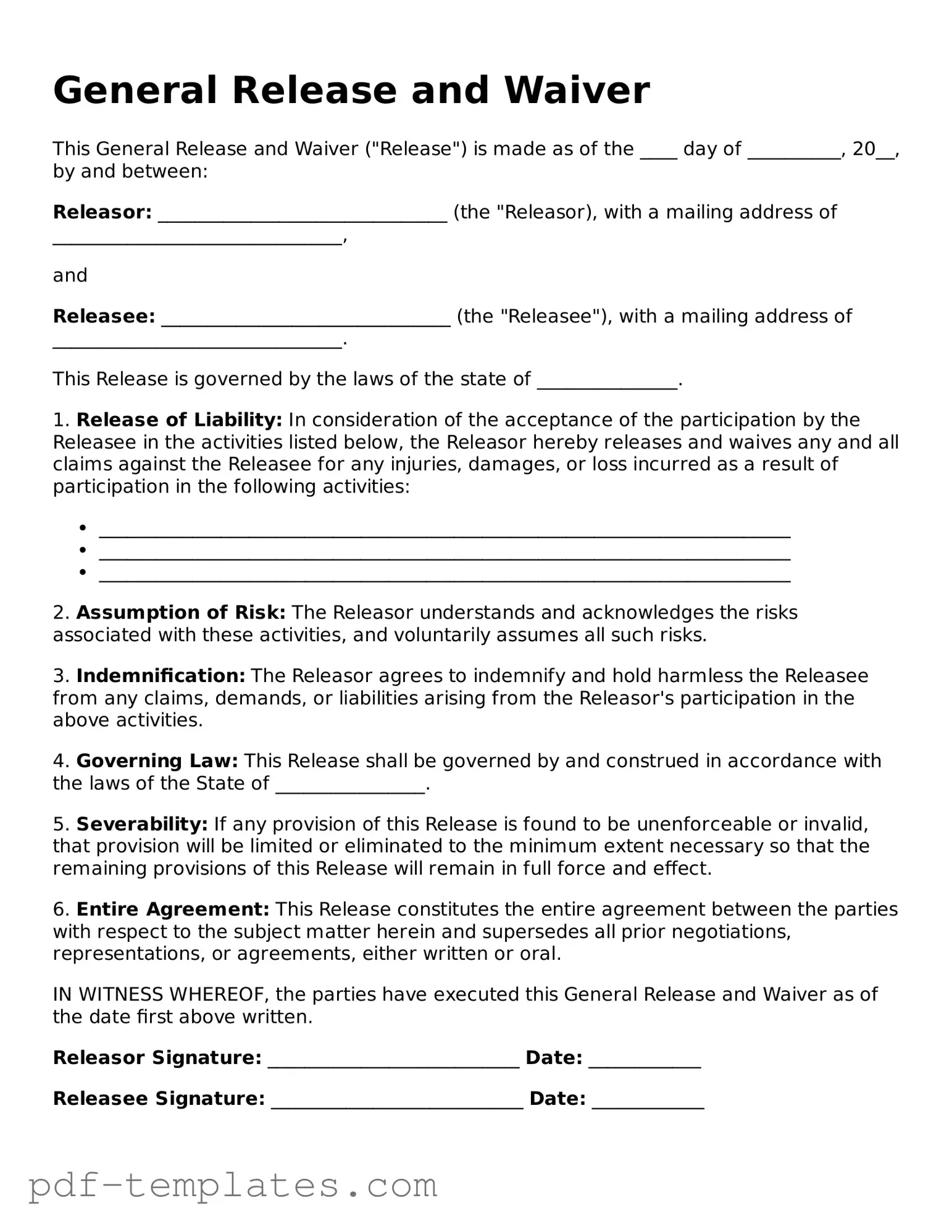The General Release and Waiver form shares similarities with a Liability Waiver. A Liability Waiver is designed to protect an individual or organization from legal claims resulting from injuries or damages that may occur during an activity. Like the General Release, this document requires the participant to acknowledge the risks involved and agree not to hold the entity responsible for any incidents that might arise. Both forms emphasize the importance of informed consent and aim to limit legal exposure by clearly outlining the responsibilities and risks associated with participation.
Understanding the importance of a formalized agreement, the comprehensive Vehicle Accident Damage Release documentation is essential for those involved in vehicular incidents. This document plays a crucial role in ensuring that all parties acknowledge their obligations and rights, thereby facilitating smoother transactions and settlements.
Another document akin to the General Release is the Settlement Agreement. This document is typically used to resolve disputes between parties, where one party agrees to relinquish any future claims in exchange for compensation or other benefits. Similar to a General Release, a Settlement Agreement requires the signatory to forgo any legal actions related to the matter at hand. Both documents aim to provide closure and prevent future litigation by establishing a clear understanding of the terms agreed upon by both parties.
The Non-Disclosure Agreement (NDA) is also comparable to the General Release and Waiver form in that it protects sensitive information. While the General Release focuses on liability and claims, an NDA prevents the sharing of confidential information between parties. Both documents require a clear understanding of what is being agreed to, ensuring that parties are aware of their obligations and the potential consequences of breaching the agreement. Each document serves to create a secure environment for participants, whether in a legal context or in business dealings.
A Release of Claims form is another document that parallels the General Release and Waiver. This form is often used in situations where an individual agrees to relinquish any claims against another party, typically after an incident or dispute. Like the General Release, it emphasizes the need for the individual to acknowledge the risks involved and the implications of giving up their right to sue. Both documents serve as protective measures for the party being released from liability, ensuring that they are not held accountable for future claims related to the situation.
The Indemnity Agreement also shares similarities with the General Release and Waiver form. An Indemnity Agreement involves one party agreeing to compensate another for any losses or damages that may arise from a specific action or event. While the General Release focuses on waiving claims, the Indemnity Agreement emphasizes financial protection and responsibility. Both documents require clear communication of the risks and responsibilities involved, fostering a sense of security for the parties involved in the agreement.
Finally, the Consent Form is another document that resembles the General Release and Waiver. Consent Forms are often used in medical or research contexts, where individuals must agree to participate in procedures or studies after being informed of potential risks. Like the General Release, a Consent Form requires the participant to acknowledge their understanding of the risks and agree not to hold the provider liable for any negative outcomes. Both forms emphasize informed consent and the importance of making educated decisions regarding participation in various activities.
